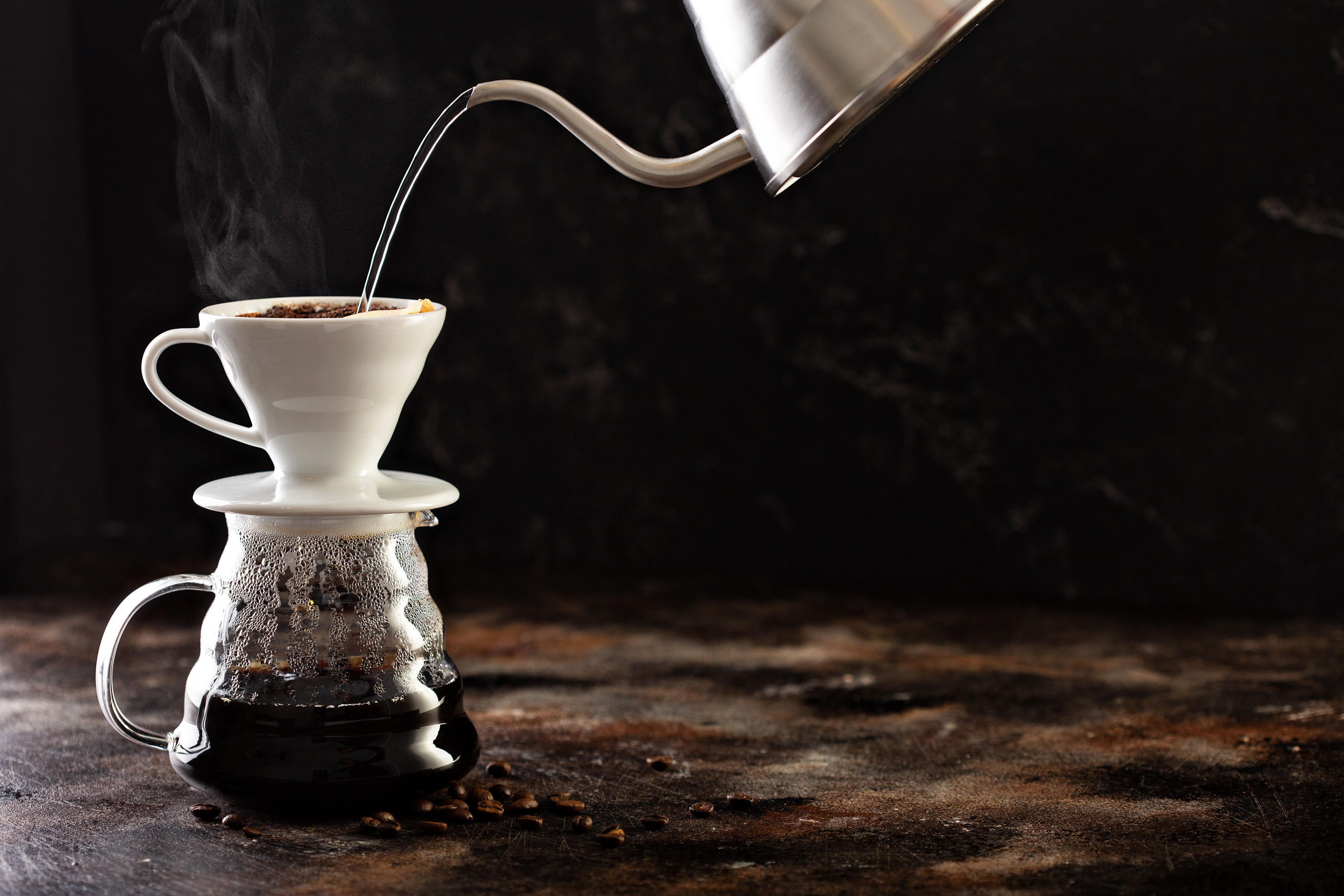Drip coffee has been a staple in households for years. It uses an automatic brewing system that requires only coffee grounds and water. This method is ideal for making coffee for several people at once; chances are this is the method your parents and grandparents use every morning.
Although drip coffee is the most well-known form of coffee brewing, various other methods can also result in a bold brew. Pour-over coffee is another popular option that uses a manual, handcrafted brewing method that involves pouring hot water over coffee grounds in a filter to create a custom cup of coffee. Both drip coffee and pour-over coffee deliver a great cup of coffee, but each has a unique brewing method. Understanding their differences is critical before determining which brewing method works best for you.
What is drip coffee?

Close your eyes and picture a coffee maker. What do you see? Chances are your mind immediately pictures an electric drip coffee maker, complete with a glass carafe. Drip coffee makers are great for casual coffee drinkers, offering an easy way to brew coffee with minimal effort. The brewing process for drip coffee is fairly simple. After filling the water reservoir with the desired amount, you’ll fill a coffee filter with freshly ground coffee and press a button. After that, the drip coffee maker does all the work for you, slowly dripping your coffee into the pot.
Inside the electric drip coffee maker, a series of processes take place that are entirely automatic. First, the water travels down the tubing inside and down into a heating element to reach the desired temperature. Once water begins to boil, air bubbles form in the tubing. You’ll be able to hear this process as it occurs, as it causes a “gurgling” sound. Bubbles then begin to rise through the tubing, pushing up drops of water. Once the water droplets reach the top, they fall through the basket with the coffee grounds and drop into the pot. All of this occurs with just a button push while you relax and patiently await your morning brew.
What is pour over coffee?

The pour-over coffee method works similarly to drip coffee in that coffee grounds are saturated with water, and liquid is collected after passing through a filter. However, this method allows for more control over a variety of factors that change the final cup.
For example, pour over coffee will enable you to control water temperature, water pour speed, as well as the amount of time it takes to brew. As a result, you can truly fine-tune the process of perfecting the temperature, strength, and taste of your cup of coffee. Many pour over coffee lovers also enjoy fine-tuning the manual process and enjoy having more time in the morning to savor the brewing process. Additionally, you can control how many cups are made and make just one or two cups at a time with this method.
Pour over vs drip coffee

Choosing between pour-over and drip coffee ultimately depends on your preferences. In general, pour-over coffee is a good option for coffee lovers who want more control over the brewing process. In contrast, drip coffee is an easy and convenient everyday coffee brewing method.
Extraction method
One of the primary differences between pour over vs drip coffee is in the extraction method. The nature of the pour-over method extracts flavor from coffee beans by allowing grounds to bloom during pauses between slow pours. On the other hand, the auto-drip extraction method is faster and does not require manual work.
Once you prepare your coffee filter and grounds, the machine extracts pours hot water over the grinds in a steady stream, resulting in freshly brewed coffee. The extraction method of pour-over coffee is much more hands-on.
Control and customization of brewing
Using a drip coffee maker provides limited control and customization of the coffee brewing process. While you can control the grounds-to-water ratio used, the machine carries out the rest. Alternatively, pour over coffee allows you to try different water temperatures for extraction and change the rate at which water is poured (brewing speed). In turn, you’ll be able to craft a more precise cup of coffee based on your taste preferences.
Coffee grounds
Medium grounds are great for pour-over coffee or for use in an automatic drip coffee maker. You can opt for pre-ground coffee or grind your beans for a fresher brew. If you plan on grinding your beans, select a quality coffee grinder for consistency.
Other differences
The choice between pour over coffee and drip coffee also depends on a few other factors. Each brewing method has its own differences in convenience, equipment required, portability, clean up, and quantity made. All in all, both methods are great choices for brewing coffee at home, but the choice comes down to preference and how much you’d like to be involved in customizing the brewing process.




